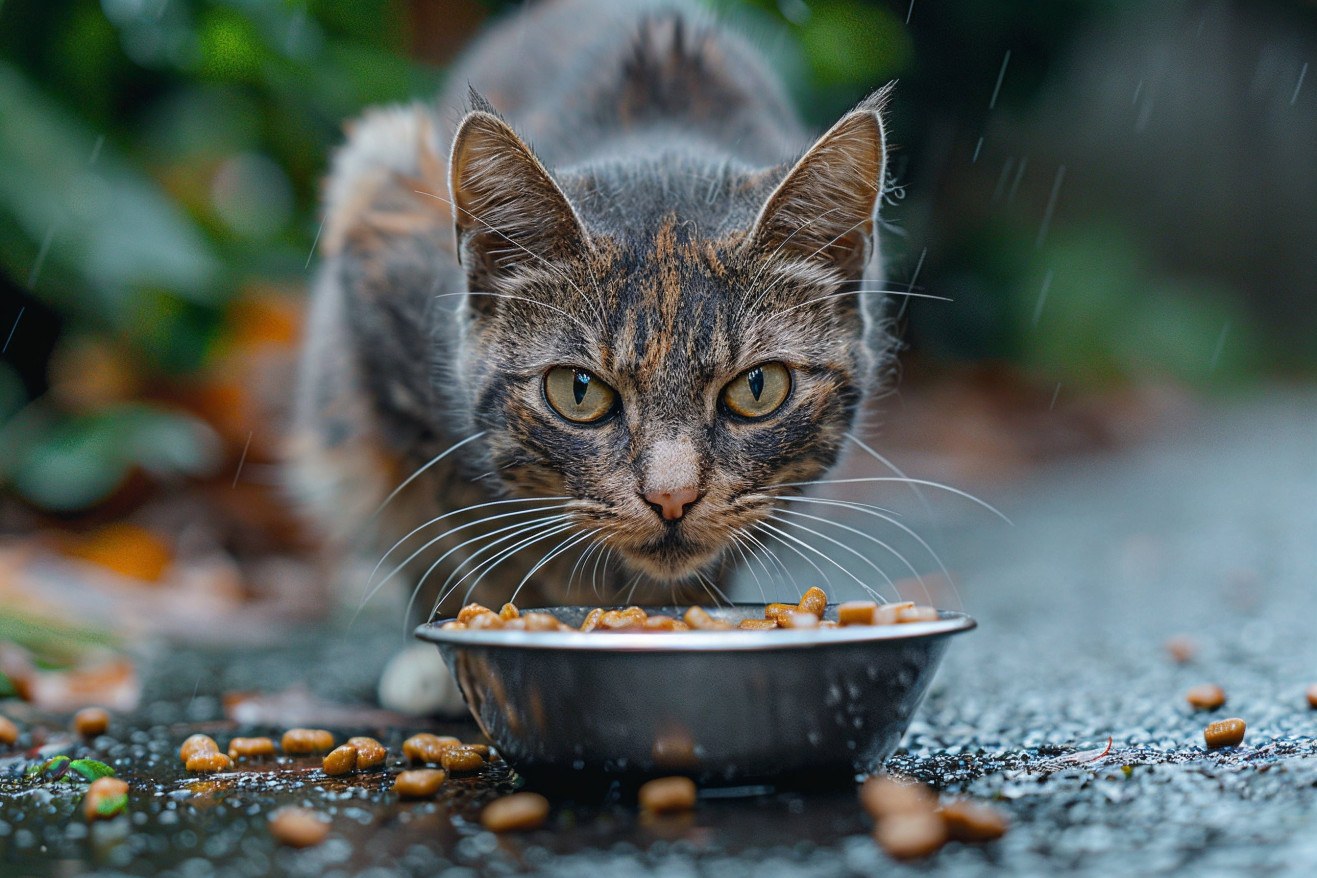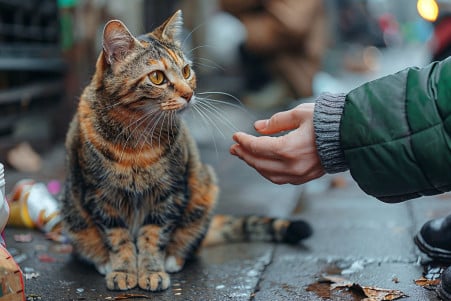What Do Feral Cats Eat? A Look at Their Urban Foraging Behaviors
17 April 2024 • Updated 16 April 2024

Feral cats may appear to be tough survivors, but their diet as they forage on the streets is influenced by a number of factors, including what's available, their natural instincts, and even where they live. Feral cats are opportunistic feeders, and their diet can include everything from small mammals, birds, and insects to human-provided food, garbage, and even plants. In urban environments, they've learned to eat human food waste like fast food and grocery leftovers, but in rural areas, they're more likely to rely on hunting.
This article will examine studies by animal behavior and nutrition scholars to learn more about the feral cat diet and the potential benefits and drawbacks of their foraging in urban environments. This includes research on feline nutrition, the dangers of eating unhealthy or contaminated food, hunting behavior, and their interactions with other urban wildlife. This information will help us better understand the challenges feral cats face and consider more humane ways to address this issue in our communities.
What do feral cats eat?
Nutritional Requirements and How to Feed
Making sure that a stray cat is getting the right nutrition is important for their health. According to Alley Cat Allies, a typical adult stray cat needs 5.5 ounces of wet food and 2 ounces of dry food per day. However, the exact amount of food a cat needs can depend on their age, how active they are, and their health.
To make sure that a stray cat is getting the right nutrition, it’s best to feed them a combination of wet and dry food. Wet food is important because it helps make sure that the cat is getting enough moisture and protein, while dry food can help keep their teeth healthy and make sure that they get enough fiber. According to The Spruce Pets, wet food can also spoil more easily in hot weather, so it may be best to feed cats dry food during the summer months.
Different life stages also require different nutritional needs. For example, kittens and nursing mothers need more food and kitten-specific formulas to make sure that they are getting the nutrition they need to grow and meet their increased energy needs. It’s also important to make sure that cats are fed on a regular schedule to make sure that they have access to the nutrition they need.
Making sure that a stray cat’s nutritional needs are met is important for their overall health and well-being. It also helps make sure that their other health needs can be addressed.
Health Issues and How to Help
Feral cats deal with a number of health problems as a result of their living conditions and lack of access to veterinary care. These issues include malnutrition, parasites, wounds, dental disease, and upper respiratory infections. According to UnderCover Pet Houses, feral cats are especially susceptible to malnutrition, parasites such as ticks and fleas, and wounds that can become infected.
In addition, feral cats can also be affected by feline leukemia, immunodeficiency viruses, and zoonotic diseases such as rabies and toxoplasmosis. Cornell University's Feline Health Center explains that while the risk of getting rabies from a cat is very low, cats can potentially spread diseases like toxoplasmosis through their feces.
Proper nutrition, veterinary care, and population control through trap-neuter-return (TNR) programs can help reduce the impact of these health issues. As Alley Cat Allies points out, TNR programs help protect public health by vaccinating cats and lowering the number of feral cats in a community. When these measures are taken and feral cats are fed a balanced diet, their health and quality of life can be greatly improved.
Responsible Feeding and Colony Care
Alley Cat Advocates recommends setting up a designated feeding area with clean, ant-proof bowls for stray cat colonies. Food should be put out on a regular schedule, and any leftovers should be taken away immediately to prevent other animals from being attracted to the area. In fact, according to Neighborhood Cats, leaving behind paper plates, empty cans, or dumping large amounts of cat food can lead to people getting angry at the cats and their caretakers.
In addition to food, it’s important to provide fresh water all year long and warm, dry shelters that are located away from people. Trap-neuter-return (TNR) programs are also essential for controlling the size of colonies and ensuring the cats are healthy. The Citywide Cat Program in Los Angeles demonstrates how these programs can help reduce the number of unowned community cats and improve their quality of life.
People can help by volunteering, donating, and educating others about responsible colony care, according to The Humane Society of the United States. By following these guidelines, communities can learn to live with feral cat colonies in a way that benefits everyone involved.
How to Trap and Handle Stray Cats
Trap-neuter-return (TNR) programs require trapping cats so that they can be spayed/neutered and vaccinated, and the process is detailed by Alley Cat Allies. The Feral Cat Coalition of Oregon notes that only humane box traps should be used and that cats should never be handled or released from traps.
The best way to trap cats is to withhold food for 24 hours in advance, use smelly bait, and check the traps frequently, according to Alley Cat Allies. Once trapped, cats should be transported in covered traps and returned to the same location after TNR, according to the SPCA of Northern Virginia.
It’s important to handle cats with care and to be cautious throughout the trapping process to ensure the safety of both the cats and the people involved. The Alley Cat Allies notes that trapping should never be done in a way that endangers the cats. By taking these precautions, communities can effectively manage stray cat populations while keeping the cats safe.
Conclusion: Ways to Help Stray Cats
Stray cats have a lot of obstacles to overcome when it comes to getting enough to eat and staying healthy. Their scavenging and opportunistic eating behaviors can put them in harm's way in a number of different ways. However, responsible feeding, colony care, and trap-neuter-return (TNR) programs can help improve their quality of life.
By recognizing their needs and using humane methods to manage them, people can live in harmony with stray cat communities. Ongoing education, advocacy, and support will be necessary to ensure that these programs continue to help stray cats in the future.


